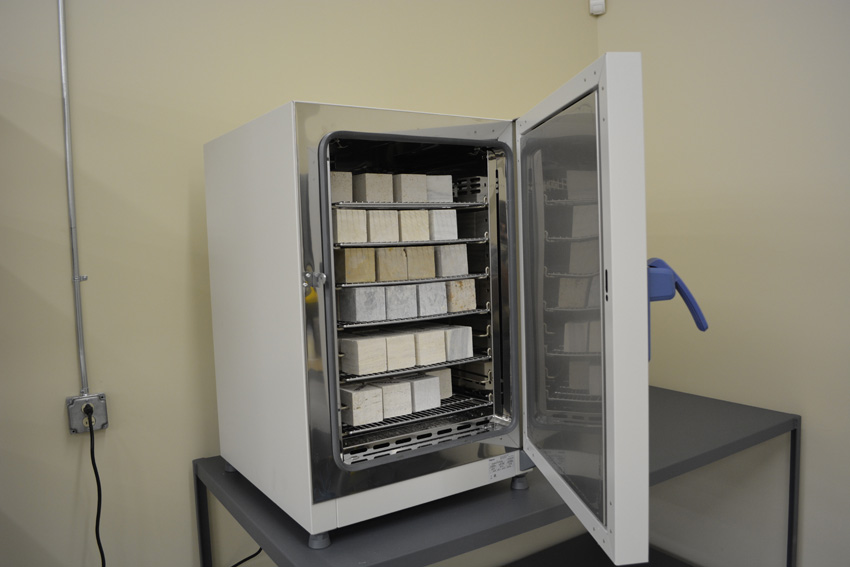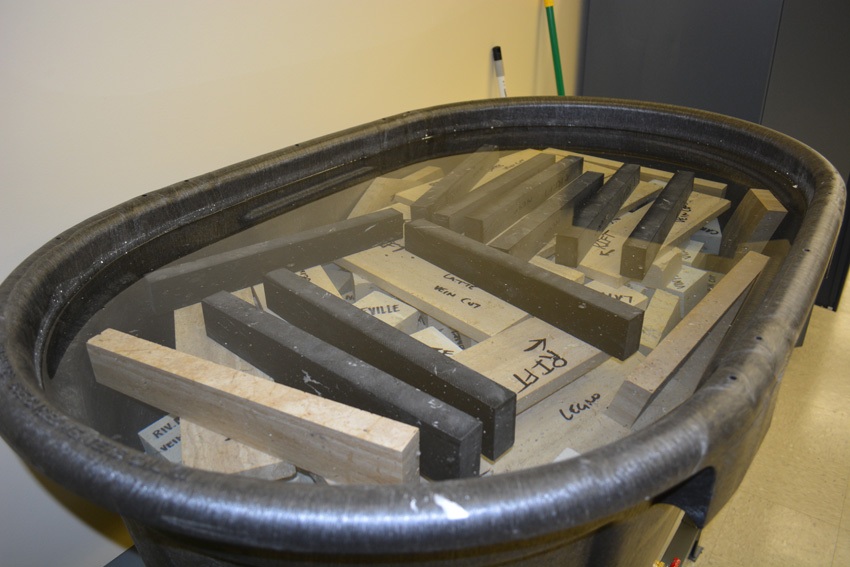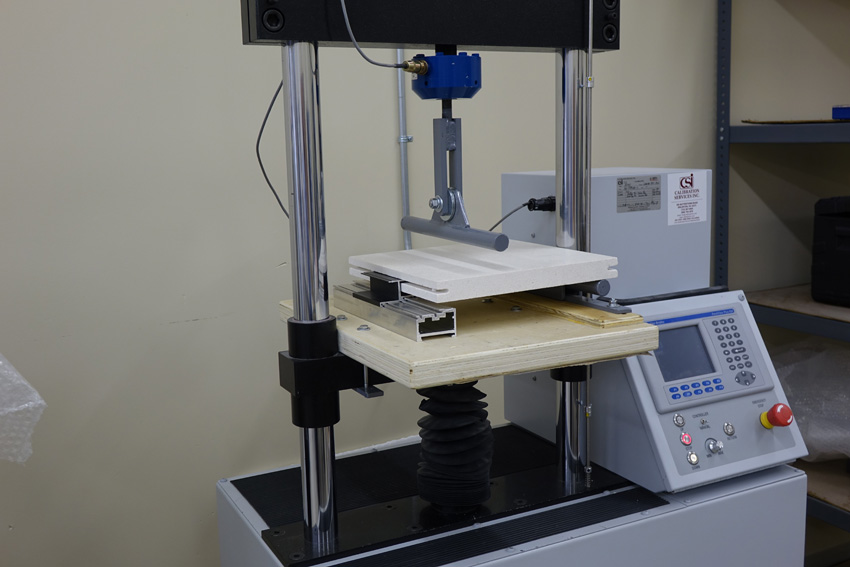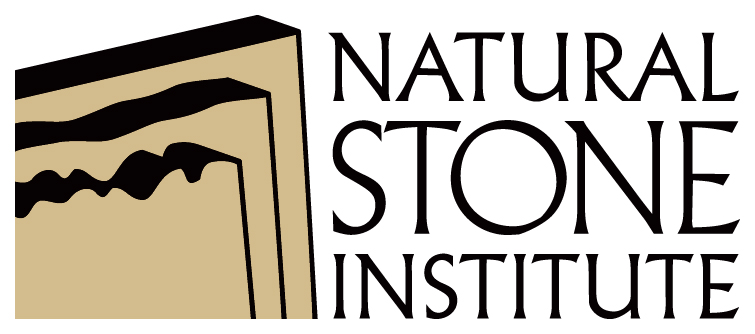The Importance of Testing When Specifying Natural Stone
 1 AIA LU/HSW; 0.1 IACET CEU*; 1 AIBD P-CE; AAA 1 Structured Learning Hour; This course can be self-reported to the AANB, as per their CE Guidelines; AAPEI 1 Structured Learning Hour; This course can be self-reported to the AIBC, as per their CE Guidelines.; MAA 1 Structured Learning Hour; This course can be self-reported to the NLAA.; This course can be self-reported to the NSAA; NWTAA 1 Structured Learning Hour; OAA 1 Learning Hour; SAA 1 Hour of Core Learning
1 AIA LU/HSW; 0.1 IACET CEU*; 1 AIBD P-CE; AAA 1 Structured Learning Hour; This course can be self-reported to the AANB, as per their CE Guidelines; AAPEI 1 Structured Learning Hour; This course can be self-reported to the AIBC, as per their CE Guidelines.; MAA 1 Structured Learning Hour; This course can be self-reported to the NLAA.; This course can be self-reported to the NSAA; NWTAA 1 Structured Learning Hour; OAA 1 Learning Hour; SAA 1 Hour of Core Learning
Learning Objectives:
- Explain why and how ASTM test standards help ensure safety and quality of a natural stone application.
- Describe which ASTM and/or ANSI tests are applicable to interior, exterior, and walking surface applications.
- Discuss how to interpret test results and their implications for material selection.
- Create a plan using relevant test data to select the proper stone for specific applications to ensure a safe occupied space.
This course is part of the Natural Stone Academy
Absorption and Density
The absorption or porosity of a stone will affect its durability and long-term appearance. If a stone readily absorbs water, it may be more susceptible to damage during freezing weather. Similarly, a highly absorbent stone may be more prone to staining. In general, a low absorption value is desirable. It is also important to know how dense or “heavy” a stone material is, especially when designing structural walls or assemblies that use stone cladding. This is why ASTM C97: Absorption and Bulk Specific Gravity Testing of Dimension Stone is one of the most important and universally administered of the ASTM tests.
For this test, at least five test specimens are required, each of which should be a cube or cylinder that measures at least 2 inches but not more than 3 inches. The stones are dried in a ventilated oven for 48 hours and weighed, then submerged in water for 48 hours and weighed again. The difference between the dry weight and wet saturated weight is the absorption value and is expressed as a percentage.
The maximum allowable water absorption is prescribed in the Materials Specification for that stone. These values range from 0.20 percent for marble to 12 percent for low-density limestone.
It is important to note that absorption value is based on the stone’s weight, not its volume. To understand this, consider two stones of the same volume but different weights—in other words, one is denser than the other. Let’s assume that both stones absorb the same amount of water. The denser stone will have a lower absorption value than the lighter stone, since the volume of water absorbed will make up a smaller percentage of the total saturated weight.
For the final part of the test, the stone is suspended by fine wire and weighed. By comparing the stone’s weight to the unit weight of water, we can obtain its specific gravity. This in turn can be used to calculate the stone’s density. This is important information that can help when designing support systems, for example.
The specific gravity of stones ranges from 2 to 3; a stone with a specific gravity of 2.6, for example, is 2.6 times as heavy as water. Specific gravity is a unitless ratio, while density is expressed in either pounds per cubic foot (lbs/ft3) or kilograms per cubic meter (kg/m3). Density can be calculated by multiplying a stone’s specific gravity by 62.4 (for lbs/ft3) or 1000 (for kg/m3).
The Materials Specifications also prescribe minimum densities. Generally, a higher-density stone is probably harder, less porous, and stronger, but this is not always the case.

Specimens are dried in an oven for 48 hours before obtaining their dry weight.

Specimens are soaked in a tub for 48 hours and weighed again; the difference between their dry and saturated weight represents the absorption value.
Anchorage Systems for Stone Cladding
Stone that is used as cladding is usually part of a curtain wall assembly that does not bear the load of the building; instead, it is attached to the structure in one of two ways. In the “hand set” method, each individual stone is individually placed and attached to either the primary building structure or a secondary wall framing system. In a panelized installation, stone panels are preinstalled into a frame or attached to a precast concrete panel. The panels are then attached to the building’s primary structure or to a secondary framing system.
In either case, anchors are used to attach the stones or panels. Anchorage systems must withstand the many forces that impact natural stone cladding. There are a number of anchorage system types, but in general, the best anchors are the simplest and designed with the fewest components. Anchors also should be carefully designed to prevent galvanic corrosion, which can cause the anchors to fail years after they have been installed.
Because anchorage systems are so critical, special ASTM tests have been developed to evaluate them.
ASTM C1354: Strength of Individual Stone Anchorages in Dimension Stone
This method is used to test a particular anchorage in a prepared stone specimen. This small-scale test is used to establish the “ultimate capacity” of a given anchor in a given stone—the point at which the anchor fails under load. It is recommended that any filler that is to be used must be omitted for the test, or prevented from bonding to either the stone or the anchor during the test. This ensures that the anchor is being tested on its own merits and is not being “helped” by the filler.
There is no “pass/fail” criteria for this test. ASTM C1242: Standard Guide for Selection, Design, and Installation of Dimension Stone Attachment Systems can be used to select the safety factor and calculate the allowable capacity of the anchor, which should be significantly lower than the ultimate capacity, as determined by then anchorage test.

A kerf anchor being tested according to ASTM 1354.
There is a test that can be used to evaluate entire assemblies instead of individual anchorages. ASTM C1201: Standard Test Method for Structural Performance of Exterior Dimension Stone Cladding Systems by Uniform Static Air Pressure requires a full-scale mockup of a stone panel. The actual stone to be installed, cut to the specified dimensions and with the correct finish, is used for the mockup. The anchorages are the actual types recommended in the design. The anchorage hardware is attached to a rigid frame which simulates the building structure. The mockup is enclosed in an air chamber and subjected to a simulated wind load.
This test provides a more accurate picture of how the assembly will behave in the field. However, because this test is quite expensive, it is not used extensively.
Other Considerations for Exterior Stone
One important consideration for exterior stone applications is how the stone will hold up to repeated cycles of freezing and thawing. In general, less dense stones with greater absorption rates may be more vulnerable to degradation. Although there is no specific ASTM test to evaluate a stone subjected to freeze-thaw cycles, the specifier does have options. Samples can be sent to an independent lab for an Accelerated Weathering test. There stones are placed in an environmental simulation chamber and subjected to any number of conditions, including temperature and humidity cycling. The stones are tested for flexural strength before and after their time in the chamber to evaluate the rate of degradation.
Pavers (both interior and exterior) should also be tested for Abrasive Hardness. This test is covered in the following section.
Developing a Plan
Now let’s consider how you can begin to create a plan for each general exterior application. The plan is the process you will follow to ensure the stone is tested and placed into the specification correctly. Consequently, you will need to decide which test data you will need for each exterior application. For most, you will need data on absorption and density, compressive strength, and flexural strength; however, if the application is for stone pavers you may also seek test data for Abrasive Hardness, or if a cladding application, consider specifying the anchorage test. If the project is located in an extreme climate, you might want to specify an accelerated weathering test. When developing your plans, factor in cost and time for additional testing and be sure to understand your options for testing.











